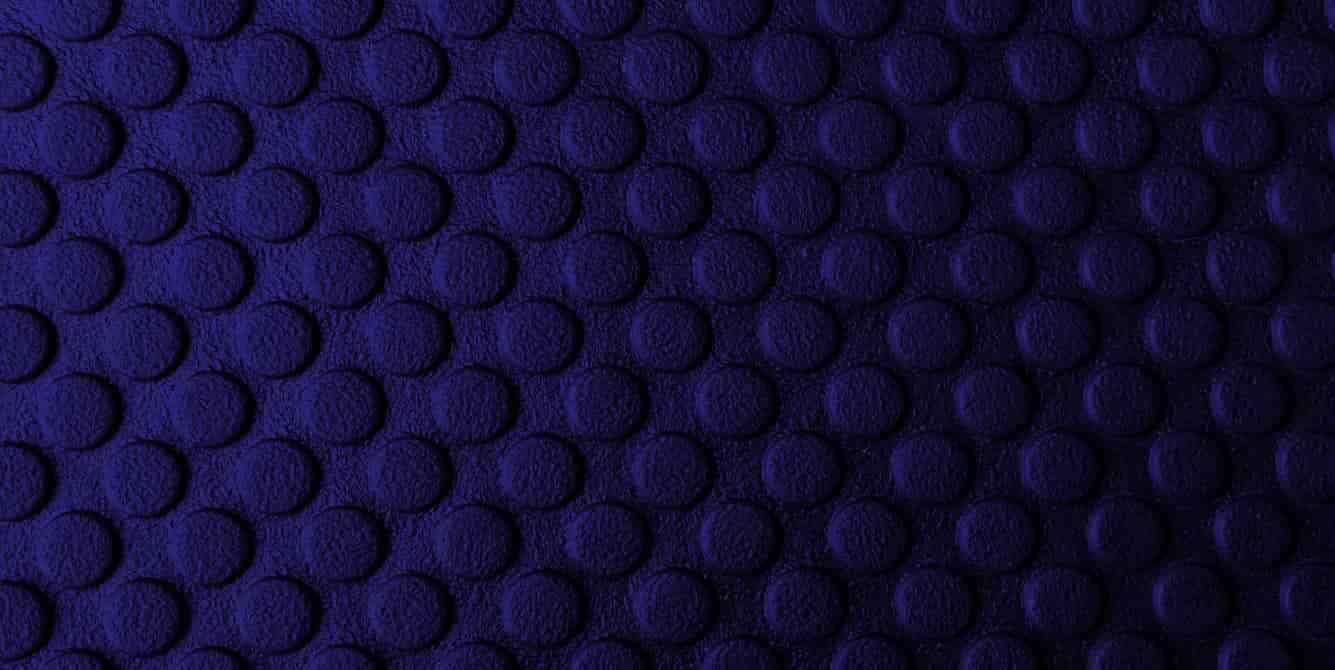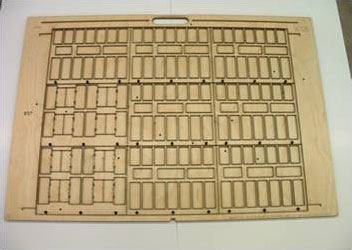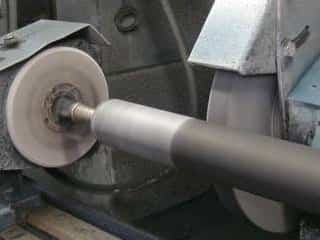
Die Cut Rubber & Lathe Cut Rubber Processing
Download the Guide to Rubber Processing Details in PDF format
Die Cut Rubber
The process of die cutting is much like making cookies using cookie cutters. The material, either in sheet or strip form, is fed into or through a machine where the die or dies are then lowered using force to cut the part's shape. Steel rule dies are the customized tooling used for die cutting rubber. They are razor sharp and are built to last the toughest production requirements.

There are a couple criteria to consider when determining if the die cutting process is the optimal choice for your specific application. One consideration is the thickness of the material - material thicknesses of .25" or less are best suited for this process. Material thicker than .25" can produce an effect call dishing, which is when the material has a concave look on the outer edge after cutting. This dishing may or may not affect the overall function of the part.
Other criteria to consider is if the part is composed of any squared or 90 degree edges. If it does, then die cutting can be considered. If it has a radius on the edge, then the die cutting process cannot be used and, instead, the molding process should be considered.
Applications to consider for die cutting include any flat component that meets the above criteria. Many elastomeric and non-elastomeric materials are conducive to being die cut, and, virtually all elastomeric materials currently available on the market can be effectively die cut. Some non-elastomeric materials such as mylar and cork are also good candidates for this process.
Lathe Cut Rubber
The lathe cutting process entails extruding a tube of rubber, cutting it to a specified length, sliding it on to a mandrel, curing the material, and then grinding the OD and cutting the finished part to length using a lathe.

Parts suited for this process are washers and gaskets requiring precision to high precision tolerances. Square cut edged, (or 90 degree edge), components are best suited for this process; however, in some cases a beveled edge can be incorporated. Most elastomeric materials available today can be produced using the lathe cutting process.
Typical applications for this process are everything from small washers used in garden hoses to large gaskets used to seal pail or drum lids. Generally speaking, high volume applications are best suited for this manufacturing process.
Mandrel Formed Tubing
The process of mandrel forming is both labor intensive and unique. The process begins with the material being extruded to a specified outside and inside diameter and then cut to a specific length. Through a process called "sticking", the tubes are then placed, or pushed, onto a mandrel in the shape of the finished part. For large volume applications, a rack of mandrels is built onto a cart. Once the tubes have been "stuck", the cart is then moved into the autoclave for curing. After curing, the parts are pulled from the mandrels. In most cases the parts are moved to a washing machine of sorts to rid them of release agents and other material used during the process. After washing the parts the ends are trimmed to length using a chop saw.
Typical applications for mandrel formed parts include components where kinking in a straight tube could occur if bent. Simple 90 degree bends as well as more complicated multiple bends are common to this process.
Most materials active on the market today are suitable for mandrel forming in durometers from 50-80.
Punching
The process of punching is a secondary operation used when holes of any shape and size are required on an extrusion profile. A punch jig is used to punch the holes using much the same method as die cutting.
A typical application for the punching operation is when an extrusion requires screw holes for securing purposes. Most materials available on the market today are conducive to this process.
Splicing
The splicing process is a secondary operation used when a spliced endless loop for an extruded profile is required as a finished part. This can be a more cost effective way to process than molding since tooling could possibly be much less expensive.
The process begins with extruding the specified profile in bulk footage. The material is then cured using one of the available curing methods; autoclave, salt bath, or microwave. Once the material is cured, it is cut to length based upon the circumference of the finished part. Now the part is ready for splicing. There are two methods for splicing available; cold splicing and splice molding.
The cold splicing process in which the two ends of an extrusion are bonded together using a rubber compatible adhesive to form an endless loop is perhaps the most common. This process is best suited for static applications where extreme tension on the splice is not required. There generally is no added tooling involved, thus the cost is kept reasonable. The process itself is quite simple. Adhesive is applied to both ends of the extrusion which are then pressed fit together until dry, (cured). There could be some bleed out of the adhesive onto the outer surface of the profile - this is quite common.
The second splicing method commonly used is a process called splice molding. This process entails a mechanically bonded splice using splice molds in the configuration of the profile. Quite simply it is bonding the joint(s) using heat, pressure, and uncured rubber much like the molding process. There are several advantages to this process. First, the strength of the bond in hot splicing is superior to the cold bonding method. If an application requires that the part be stretched or pulled to any degree, this process is recommended. Not only can an extrusion be spliced endless, but if a "picture frame" design is required, the corners can be splice molded to achieve the desired effect.
Most elastomeric materials available are compatible with this process. Typically, the most common use of this process is a hollow round gasket application.